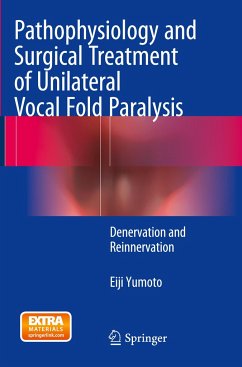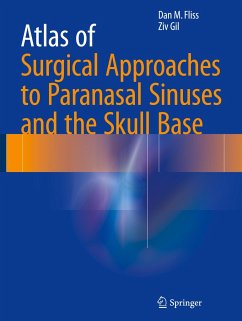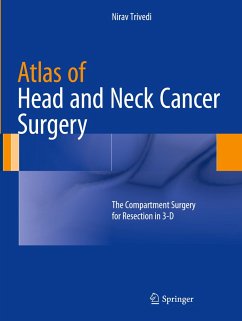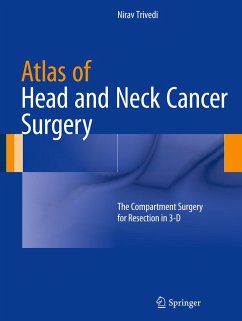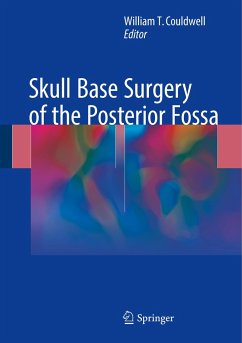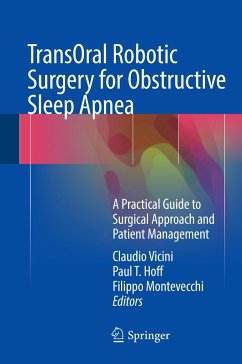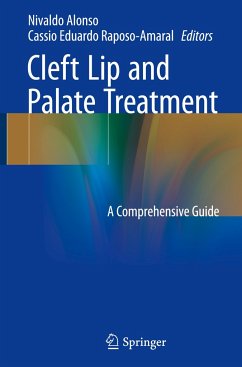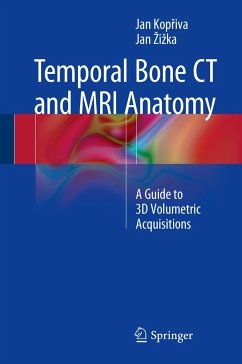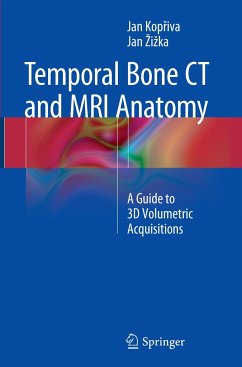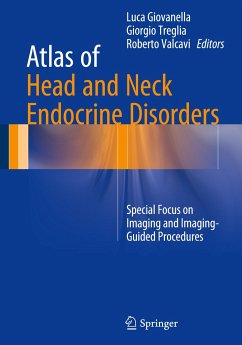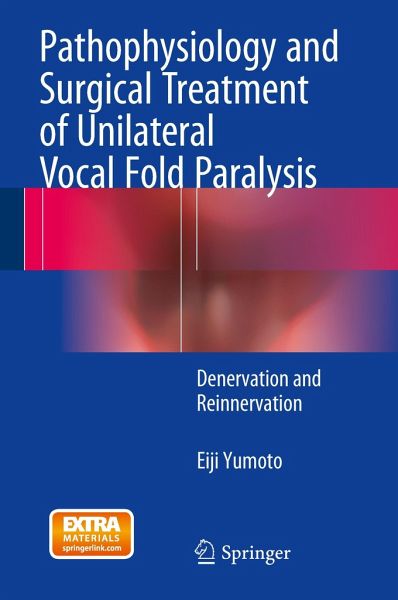
Pathophysiology and Surgical Treatment of Unilateral Vocal Fold Paralysis
Denervation and Reinnervation
Versandkostenfrei!
Versandfertig in 6-10 Tagen
76,99 €
inkl. MwSt.
Weitere Ausgaben:

PAYBACK Punkte
38 °P sammeln!
All laryngologists, especially general ENT doctors who see patients with paralytic dysphonia, as well as speech pathologists, will benefit from this book's coverage of many basic and clinical aspects of reinnervation in retrieving patients' normal voices.Phonosurgical treatment for paralytic dysphonia was first established in the late 1970s in the form of arytenoid adduction and medialization laryngoplasty. It made possible the improvement of patients' post-op voices, but it was difficult to regain patients' own pre-paralysis voices. It has recently been established that immediate reconstructi...
All laryngologists, especially general ENT doctors who see patients with paralytic dysphonia, as well as speech pathologists, will benefit from this book's coverage of many basic and clinical aspects of reinnervation in retrieving patients' normal voices.
Phonosurgical treatment for paralytic dysphonia was first established in the late 1970s in the form of arytenoid adduction and medialization laryngoplasty. It made possible the improvement of patients' post-op voices, but it was difficult to regain patients' own pre-paralysis voices. It has recently been established that immediate reconstruction of the recurrent laryngeal nerve during tumor extirpation is effective in recovery of their original voices in patients with unilateral vocal fold paralysis (VFP). The activity of the thyroarytenoid muscle is needed to recover normal voices. Nerve-muscle pedicle (NMP) flap implantation with a refined technique to the thyroarytenoid muscle is a novel method for that purpose. NMP flap implantation combined with arytenoid adduction was applied by the author to patients suffering from dysphonia and most patients did recover their nearly normal voices after surgery.
This book provides readers with (1) what the currently prevalent surgical procedures are, (2) unsatisfactory results of these conventional procedures, (3) results of immediate recurrent laryngeal nerve reconstruction during tumor extirpation, (4) the outcome of delayed reinnervation combined with arytenoid adduction in patients with VFP and further, (5) the scientific basis that explains the reasons why the author's method is effective in the recovery of patients' own pre-paralysis, normal voices.
Phonosurgical treatment for paralytic dysphonia was first established in the late 1970s in the form of arytenoid adduction and medialization laryngoplasty. It made possible the improvement of patients' post-op voices, but it was difficult to regain patients' own pre-paralysis voices. It has recently been established that immediate reconstruction of the recurrent laryngeal nerve during tumor extirpation is effective in recovery of their original voices in patients with unilateral vocal fold paralysis (VFP). The activity of the thyroarytenoid muscle is needed to recover normal voices. Nerve-muscle pedicle (NMP) flap implantation with a refined technique to the thyroarytenoid muscle is a novel method for that purpose. NMP flap implantation combined with arytenoid adduction was applied by the author to patients suffering from dysphonia and most patients did recover their nearly normal voices after surgery.
This book provides readers with (1) what the currently prevalent surgical procedures are, (2) unsatisfactory results of these conventional procedures, (3) results of immediate recurrent laryngeal nerve reconstruction during tumor extirpation, (4) the outcome of delayed reinnervation combined with arytenoid adduction in patients with VFP and further, (5) the scientific basis that explains the reasons why the author's method is effective in the recovery of patients' own pre-paralysis, normal voices.




